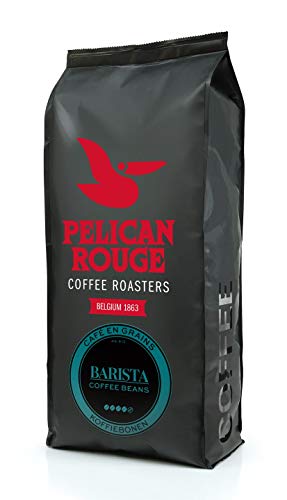15 Tips Your Boss Wished You Knew About Which Coffee Beans Are The Best

Which Coffee Beans Are the Best?
The type of beans you choose can make the difference when is making a great cup. Each type has a distinct flavor that is perfect for the variety of beverages and food recipes.
Panama is the leader in the field due to their rare Geisha beans that score highly in cupping tests, and are also expensive at auction. But Ethiopia especially Yirgacheffe beans is close behind.
1. Geisha Beans from Panama
If you're searching for the finest coffee beans available look at Geisha beans from Panama. Geisha beans are highly sought-after because of their distinctive aroma and flavor. These rare beans, grown at high altitudes undergo a unique process that gives them their signature flavor. The result is a cup with a rich, smooth flavor.
Geisha coffee is a native of Ethiopia but was introduced in Panama for the first time in 1963. Geisha coffee has been known for winning competitions thanks to its exquisite taste and aroma. Geisha beans can be expensive due to the amount of labor needed to grow them. The Geisha coffee plant is more difficult to cultivate than other coffee plants because it requires higher elevations and unique climate conditions.
Geisha beans are also very delicate and should be handled with great care. They need to be meticulously sorted and meticulously prepared for roasting. Otherwise, they could turn acidic and bitter.
The Janson Coffee Farm is located in Volcan. The farm is committed to preserving the environment and is a leader in the production of high-quality beans. They use solar panels to generate energy and recycle waste water and materials, and employ enzyme microbes to improve soil. They also reforest areas and utilize recycled water to wash. The coffee they make is a Washed Geisha and was awarded the highest score at a Panama Coffee Competition.
2. Ethiopian Coffee
Ethiopia is a coffee giant with a long history of producing the best drinks around the globe. They rank 5th in the number of coffee producers in the world, and their beans are highly sought-after for their distinctive fruity and floral flavor profiles. Ethiopians, unlike many other beans, taste best when roasting to medium-low. This allows the delicate floral notes to stay while highlighting their citrusy and fruity flavors.
While Sidamo beans are known for their crisp acidity, citric acidity, other coffees from other regions like Yirgacheffe and Harar are also considered to be some of the best around. Harar is among the most famous and oldest varieties of Ethiopian coffee, and it has a distinctive wine and mocha flavor profile. Coffees from the Guji zone are also renowned for their distinct terroir and complex flavors.
Another kind of coffee that comes from Ethiopia is called natural process. It is processed using dry processing instead of wet-processing. The main difference between these two methods is that wet-processing involves washing the coffee beans, which can remove some of the fruity and sweetness from the bean. Natural Ethiopian coffees that were processed weren't as well-known than their washed counterparts. They were used more to enhance blends than they were offered on the market for specialty coffees. Recent technological advancements have led to higher quality natural Ethiopians.
3. Brazilian Coffee
Brazilian Coffee is a rich mix of various types of beans. It is known to have a low acidity. It has a sweet flavor with some cocoa. The flavors differ based on the region and state it is grown. It is also renowned for its citrus and nutty notes. It is ideal for those who like medium-bodied coffee.
Brazil is the world's biggest exporter and producer of coffee. The country produces more than 30 percent of the world's coffee beans. It is a significant agricultural industry, and Brazil's economy depends heavily on it. Brazil has a climate that is perfect for growing coffee, and fourteen major coffee-producing areas.
The main beans used in Brazilian coffee are Catuai, Mundo Novo, Obata and Icatu. They are all varieties of Arabica. There are also a number of hybrids that contain Robusta. Robusta is the name of a coffee plant that originated in Sub-Saharan Africa. It's not as tasty and aromatic as Arabica, but it's more easy to cultivate.
It is important to note that slavery still exists in the coffee industry. Slaves are being subjected in Brazil to exhausting and long work days, and they may not have adequate housing. The government has taken steps to address this problem and has instituted programs to help farmers with their debts.
4. try what she says are renowned for their earthy, dark flavor. The volcanic ash in the soil gives them an earthy taste and a robust body. They are perfect to mix with beans from Central America or East Africa with a higher acidity. They also respond well to roasting that is darker. Indonesian coffees have a complex and rustic taste profile and often have tasting notes of leather, tobacco wood, ripe berries and spices.
Java and Sumatra are the two largest coffee-producing regions in Indonesia however, some coffee is also produced on Sulawesi and Bali. A lot of farms in these regions use a wet hulling process. This differs from the washed method of processing which is typical in most of the world, where coffee cherries are separated and then washed before drying. The hulling process reduces the amount of water that is in the coffee, which reduces the impact rain can have on the quality of the final product.
One of the most sought-after and high-quality varieties of Indonesian coffee is Mandheling that comes from the Toraja region. It is a rich and full-bodied coffee that has hints of candied fruit and intense chocolate flavor. Other varieties of coffee that hail from this region are Gayo and Lintong. These coffees are usually wet-hulled, with a full and smoky aroma.

